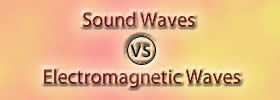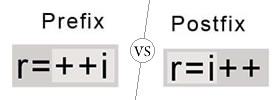Difference between Toaster and Toaster Oven
Key Difference: Toasters have been a popular appliance since its launch. Almost all older movies and television shows have a glimpse of the old toaster as a faithful appliance to make bread crispy. That is the main objective of a toaster, to toast bread and other bread products. Toaster ovens are ovens that are small electric ovens that have a front door, removable wire rack and removable baking pan.
Toasters and toaster ovens are quite similar in nature, with a few distinct differences. While, the primary objective of a toaster is to toast bread slices and other bread products, toaster ovens can do much more. Toaster ovens have additional features that allow it to toast, bake and broil. This makes it a more all-round appliance, thus eliminating the need of having a separate toaster and a separate oven for baking.

Toasters have been a popular appliance since its launch. Almost all older movies and television shows have a glimpse of the old toaster as a faithful appliance to make bread crispy. That is the main objective of a toaster, to toast bread and other bread products. Toasters can-be two slice or four-slices, which just states how many slices can the toaster toast at a time. They run on electricity and have a crispness meter that allows the user to set how crispy they want their toast. The toaster takes about 1-3 minutes to toast the bread and the bread product depending on what the number the meter is set on.
The first toaster that was invented was not at all the toaster that we use today. It was a long-handled toasting fork, which allowed uses to put the slice of bread on the fork and toast it on an open flame. The first electric toaster was created by Alan MacMasters in Edinburgh, Scotland, followed by Stephen J. Cook & Company in UK in 1893. These toasters had an electric, iron-wiring frame. There were various other attempts at trying to create a working electric toaster. General Electric filed a patent in 1909 for a toaster, claiming it to be the "the first commercially successful electric toaster." In 1913, Lloyd Groff Copeman and his wife introduced a new toaster that had the ability to automatically turn the bread. Before this, the bread would be toasted on one side and would have to be manually turned. The pop-up toasters that we know now came about in 1919 and the design was patented by Charles Strite. The toasters have are being introduced today does not even require the owner to pull down the lever; it has the ability to automatically do that when the bread is placed in the slot. Toasters are also available in various designs, patterns and even funky ways to imprint images on the bread.
 Toaster ovens are ovens that are small electric ovens that have a front door, removable wire rack and removable baking pan. These ovens are often larger than toasters, but smaller than conventional ovens. Most of these toaster ovens are known as OTG or Oven, Toaster and Griller as it has the ability to perform all three actions. It can be called as a pint-sized, portable oven. It can easily be shifted to any counter or platform and does not require any additional set-up to work. Toaster ovens work on electricity.
Toaster ovens are ovens that are small electric ovens that have a front door, removable wire rack and removable baking pan. These ovens are often larger than toasters, but smaller than conventional ovens. Most of these toaster ovens are known as OTG or Oven, Toaster and Griller as it has the ability to perform all three actions. It can be called as a pint-sized, portable oven. It can easily be shifted to any counter or platform and does not require any additional set-up to work. Toaster ovens work on electricity.
Toaster ovens have various different settings such as toast, bake and broil along with temperature gauge and timer to select the desired temperature and the time. The toaster oven can be used for baking goods such as small cakes, cookies, bread, etc. as well as have a broil setting for roasting meat, fish, eggs, etc. One setback for the toaster oven is that it cannot be used for anything that requires boiling, such as making rice or other food items. Once the food that is placed in the oven is done, the oven will automatically turn off. The person would have to manually open the door and take the food out.
|
|
Toaster |
Toaster Oven |
|
Runs on |
Runs on electricity |
Runs on electricity |
|
Price |
It is very cheap compared to other appliances. |
It is almost in the same range as the microwave. It is a plug-and-use appliance. |
|
Uses |
Toasting bread and bread products. |
For toasting, baking, broiling foods. |
|
Heating |
Coils and/or flat pieces of metal that heat up using electricity and toast the bread. |
Heating is a bit as the electric coils take time to heat up. |
|
Cooking Time |
1-3 minutes depending on the crispness that is set. |
Toaster ovens take a little while to cook, similar to conventional ovens. |
|
Economical |
In the long run, it is considered to save large amount of electricity and gas, as it takes more electricity to toast it on the stove. |
Toasters are economical as it works on electricity. It does not consume too much electricity. However, economical ability varies depending on the usage of the device. |
|
Heat distribution |
Even heat distribution. |
Toasters do not provide even heat. They do not have a fan to provide even distribution. Toasters have more heat where the coils are. |
|
Temperature Management |
Temperature is managed automatically. The crispness of the bread can be managed using a knob or a button. |
Temperature is managed using temperature controls. The heat can be set to desired temperature, depending on what is going to be cooked. |
|
Burners |
Coils |
Toaster ovens have electric coils for creating heat. |
|
Benefits |
Toasters make it fast, cheap and quite easy to toast bread. It is also economical in the long run. |
Toaster ovens are similar to cheaper and more compact versions of conventional ovens. They are perfect for baking, broiling, roasting and toasting. It is also quite cheap compared to the big conventional oven. |
|
Limitations |
Toasters can only be used for toasting bread and bread products such as bagels. |
Toasters can make only limited amount of food (for example, only small cakes can be made as the oven is small); takes time to heat up and cook. It also has uneven heat distribution. Toaster ovens are also unable to make foods such as rice or boiling. |
Image Courtesy: steadfastappliance.com, made-in-china.com









Add new comment